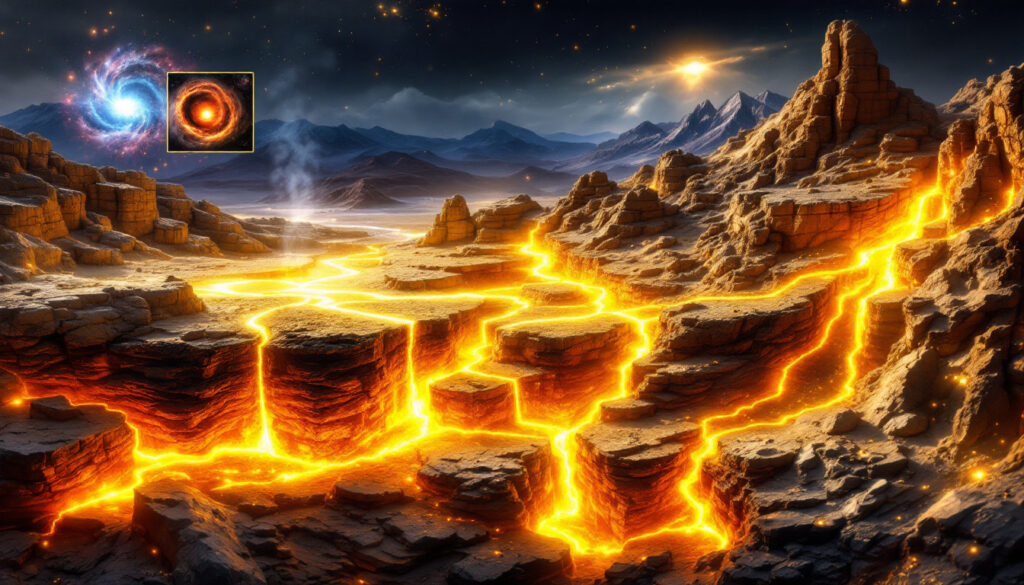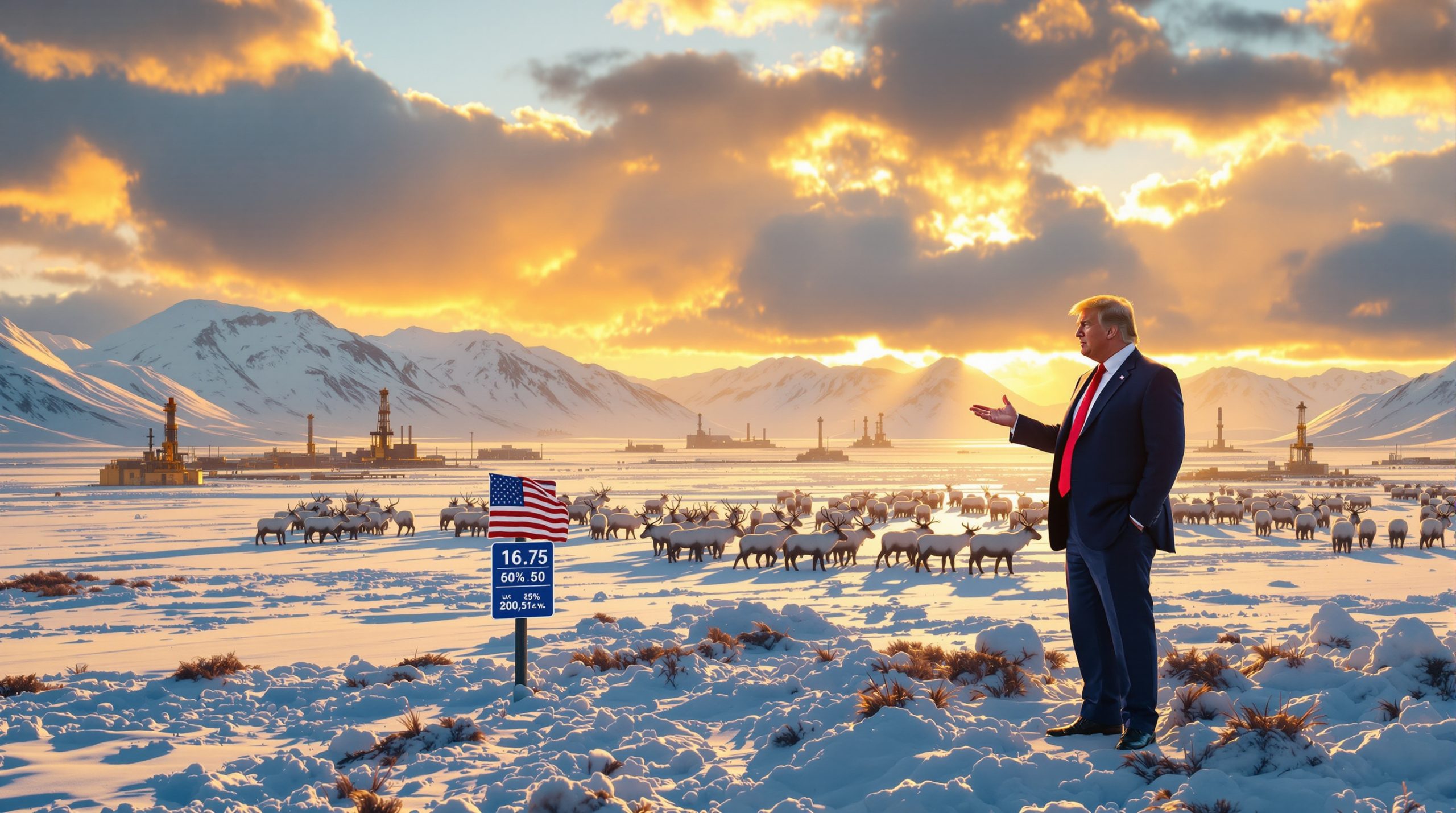What Are the Primary Processes Behind Gold Formation?
The Cosmic Origins of Gold
Gold's journey began billions of years ago in the most violent events in our universe. During neutron star collisions and supernova explosions, extreme temperatures and pressures created the perfect environment for heavy element formation through rapid neutron capture processes (r-process nucleosynthesis). These cosmic forges are the only natural phenomena powerful enough to create elements as heavy as gold.
When Earth formed approximately 4.6 billion years ago, it incorporated this cosmic gold throughout its structure. Due to gold's exceptional density (19.3 g/cm³), most of it sank toward Earth's core during planetary differentiation, explaining why accessible gold deposits are so rare in the crust.
Scientists estimate that Earth's core may contain enough gold to cover the planet's surface in a 1.5-foot layer. However, this gold remains permanently inaccessible, locked within the molten inner core at depths exceeding 2,900 kilometers.
Hydrothermal Vein Formation
The primary mechanism for creating accessible gold deposits involves hydrothermal processes deep within Earth's crust:
- Magmatic activity generates mineral-rich hydrothermal fluids containing dissolved metals
- These superheated fluids (300-700°C) travel through rock fractures under immense pressure
- Changes in temperature, pressure, or chemical environment trigger gold precipitation
- Gold deposits alongside minerals like quartz, pyrite, and other sulfides
- Over millions of years, this process creates concentrated vein deposits
The effectiveness of gold transportation in these fluids depends on specific chemical conditions. Gold typically travels as chloride complexes in acidic, oxidizing conditions or as bisulfide complexes in reducing environments. When these solutions encounter chemical or physical changes—like mixing with groundwater or contacting different rock types—gold precipitates from solution.
"Hydrothermal fluids can concentrate gold by factors of thousands to millions compared to its average crustal abundance of just 4 parts per billion. This natural concentration process creates the economically viable deposits we mine today." – Dr. Richard Goldfarb, U.S. Geological Survey
The Role of Plate Tectonics
Plate tectonics provides the geological engine driving gold formation and concentration:
- Subduction zones: When oceanic crust descends beneath continental plates, it releases water-rich fluids that trigger melting in the overlying mantle, generating metal-rich magmas
- Continental collision: The intense pressure and heat created when two continental plates collide can remobilize existing gold and concentrate it in new structural features
- Transform boundaries: Lateral movement between plates creates fractured zones ideal for hydrothermal fluid circulation
The famous gold deposits of California formed through subduction-related processes along the western margin of North America during the Mesozoic era. Similarly, many of the world's richest deposits align with ancient or current plate boundaries.
How is Gold Redistributed After Initial Formation?
Secondary Formation: Placer Deposits
Once primary gold deposits form, weathering and erosion begin redistributing these concentrations:
- Physical and chemical weathering breaks down gold-bearing rock
- Erosion frees gold particles from their host material
- Water transport carries gold particles downstream
- Gold's high density causes it to settle in predictable locations
These natural sorting processes create placer deposits, which concentrate gold in:
- River bends where flow velocity decreases
- Natural traps like bedrock irregularities
- The base of waterfalls and rapids
- Ancient buried river channels
The California Gold Rush of 1849 began with the discovery of placer gold at Sutter's Mill, where gold eroded from the Sierra Nevada mountains had concentrated in the American River's sediments over millions of years.
Natural Concentration Mechanisms
The physics of gold concentration works through several mechanisms:
- Density separation: Gold (19.3 g/cm³) settles faster than common minerals like quartz (2.65 g/cm³) or feldspars (2.56 g/cm³)
- Mechanical sorting: Flowing water sorts particles by size and density
- Riffling action: Natural obstacles create turbulence patterns that trap heavy minerals
- Beach processes: Wave action concentrates heavy minerals in distinctive black sand deposits
This natural engineering explains why gold prospectors often find "black sand" (containing magnetite, ilmenite, and other heavy minerals) associated with placer gold—they share similar physical properties that cause them to concentrate together.
Metamorphic Redistribution
Deep burial and tectonic pressures can transform existing gold deposits:
- Heat and pressure mobilize gold from low-grade disseminations
- Deformation creates new structural pathways for metal-rich fluids
- Metamorphic fluids concentrate gold in pressure shadows and fold hinges
- Chemical reactions between fluids and host rocks precipitate gold in new mineral assemblages
The world-class deposits of Victoria, Australia formed through metamorphic redistribution of gold during the Paleozoic Era, creating exceptionally rich veins with specimens containing more than 2,000 ounces of gold per ton.
Where Are the World's Major Gold Deposits Located?
The Witwatersrand Basin (South Africa)
The Witwatersrand Basin represents Earth's greatest gold repository:
- Produced over 40% of all gold ever mined (approximately 52,000 tonnes)
- Formed approximately 3 billion years ago as an ancient inland sea
- Extends across a 300 km by 100 km area in South Africa
- Contains microscopic gold particles in sedimentary conglomerate beds called "reefs"
Unlike most gold deposits, the Witwatersrand's gold occurs in fossilized river sediments, leading to debate about whether it's a true placer or modified by later hydrothermal activity. Mining operations now extend to depths exceeding 4 kilometers, making these among the deepest mines on Earth.
The gold occurs alongside uranium minerals and pyrite, suggesting a reducing environment existed during deposition. Average grades range from 5-25 g/t, though historical mining focused on the richest sections exceeding 15 g/t.
The Carlin Trend (Nevada, USA)
Discovered in 1961, the Carlin Trend revolutionized gold exploration drilling:
- Spans 40 miles across northeastern Nevada
- Gold occurs as submicroscopic particles (often <1 micron) in sedimentary rocks
- Has produced over 70 million ounces, making Nevada the world's 4th largest gold producer
- Formed approximately 42-37 million years ago during the Eocene epoch
What makes Carlin-type deposits unique is that their gold cannot be seen even under standard microscopes—it exists as a solid solution within pyrite or as nanoparticles dispersed through altered carbonate rocks. This required developing specialized extraction techniques like heap leaching with cyanide solutions.
"Carlin-type deposits represented a paradigm shift in gold exploration. Before their discovery, geologists assumed economic gold deposits needed visible gold. The Carlin Trend showed us invisible gold could create world-class deposits." – John Muntean, Nevada Bureau of Mines and Geology
Kalgoorlie Super Pit (Australia)
Australia's iconic Kalgoorlie Super Pit exemplifies the country's gold endowment:
- One of the world's largest open-pit gold mines at 3.8 km long, 1.5 km wide, and 600 meters deep
- Located in Western Australia's Yilgarn Craton, one of Earth's oldest crustal fragments
- Formed through hydrothermal processes approximately 2.7 billion years ago
- Produces approximately 800,000 ounces annually
- Expected to operate until at least 2034
The deposit formed when gold-bearing fluids invaded a doleritic host rock (the Golden Mile Dolerite), creating multiple parallel vein systems. The region demonstrates the importance of structural preparation—intersecting fault systems provided pathways for mineralizing fluids to access chemically receptive host rocks.
The Yukon-Klondike Region (Canada)
The legendary Klondike goldfields sparked one of history's most famous gold rushes:
- Discovered in 1896, triggering a stampede of approximately 100,000 prospectors
- Primarily placer deposits within the Klondike River watershed
- Gold originated in metamorphic schists of the Yukon-Tanana Terrane
- Concentrated in both modern streams and ancient buried channels
- Has produced over 20 million ounces since discovery
Interestingly, the Klondike's gold deposits were preserved by their unique geological history—they escaped glaciation during the Pleistocene ice ages, allowing millions of years of gold concentration to remain intact rather than being scattered by advancing ice sheets.
What Geological Conditions Create Gold-Rich Regions?
Volcanic Activity and Gold Formation
Volcanic systems create distinct types of gold deposits:
- Epithermal deposits: Form within 1-2 km of the surface in volcanic terrains
- Low-sulfidation: Neutral pH fluids create distinctive banded quartz veins
- High-sulfidation: Acidic fluids create alteration haloes and disseminated gold
- Porphyry systems: Develop in the roots of volcanoes (2-5 km depth)
- Contain gold alongside copper and sometimes molybdenum
- Feature stockwork veins and disseminated mineralization
- Examples include Grasberg (Indonesia) and Bingham Canyon (Utah)
Modern analogs for forming gold deposits can be observed in geothermal fields like those in New Zealand, where precious metals currently precipitate from thermal waters at depth.
Ancient Cratons and Stable Continental Cores
Earth's oldest geological domains disproportionately host gold deposits analysis:
- Cratons preserved geological activity spanning billions of years
- The Canadian Shield, Yilgarn Craton (Australia), and Kaapvaal Craton (South Africa) host major gold provinces
- Archean greenstone belts (formed 2.5-3.8 billion years ago) contain distinctive gold-bearing structures
These ancient crustal fragments provided both the source rocks from which gold could be extracted and the stable structural settings where deposits could accumulate undisturbed for billions of years.
The Kalgoorlie region of Western Australia typifies these settings, where how gold is formed in the earth 2.7 billion years ago remain economically viable today because they've experienced minimal disruption through geological time.
Subduction Zone Dynamics
Subduction zones create ideal conditions for gold deposit formation:
- Dehydration of the descending slab releases metal-rich fluids
- These fluids trigger melting in the overlying mantle wedge
- Resulting magmas transport metals upward through the crust
- Circum-Pacific "Ring of Fire" hosts numerous world-class gold deposits
The correlation between subduction and gold is evident in the Andes mountains, where active subduction has created a metallogenic belt containing major deposits in Chile, Peru, and Colombia. Similarly, the west Pacific's subduction zones have generated significant deposits throughout Indonesia, Papua New Guinea, and the Philippines.
How Do Weathering Processes Affect Gold Distribution?
Lateritic Gold Deposits
In tropical regions, intense chemical weathering creates distinctive gold deposits:
- Deep weathering profiles extend 30-100 meters below surface
- Lighter elements leach away, concentrating residual gold
- Forms blanket-like deposits with gradual grade transitions
- Common in West Africa, Brazil, and other tropical regions
These lateritic profiles develop over millions of years under specific climatic conditions, with average gold grades typically ranging from 0.5-2.5 g/t. While lower grade than many primary deposits, their near-surface nature and large tonnage often make them economically attractive.
West African countries like Ghana, Mali, and Burkina Faso have emerged as significant gold producers largely due to their extensive lateritic gold resources.
Alluvial and Placer Concentration
Rivers act as natural concentrating mechanisms for gold:
- Gold particles detach from primary sources during weathering
- Flowing water sorts particles by density and size
- Gold accumulates in predictable locations:
- Inside bends where water velocity decreases
- Behind large boulders creating low-pressure zones
- At the bottom of gravel layers above impermeable bedrock
- In ancient river channels now buried by younger sediments
Modern analytical techniques have revealed that bacteria may play a role in dissolving, transporting, and reprecipitating gold in these environments, challenging the traditional view of placer formation as purely mechanical.
Beach and Marine Placers
Coastal processes create distinctive gold-bearing environments:
- Wave action and longshore currents sort minerals by density
- Gold concentrates in narrow bands along current and historical shorelines
- Notable examples exist in Nome (Alaska), New Zealand, and Oregon
- Often associated with "black sand" containing magnetite and other heavy minerals
Marine placers also form on continental shelves, particularly during periods of lower sea levels when rivers extended across today's submerged coastal plains. These deposits remain largely unexploited due to the technical challenges of underwater mining.
What Challenges Exist in Modern Gold Exploration?
Finding New Deposits
Gold exploration faces growing challenges:
- Most surface and near-surface deposits have been discovered
- New finds require sophisticated technologies:
- Hyperspectral satellite imaging to identify alteration signatures
- Airborne geophysics (magnetic, radiometric, electromagnetic surveys)
- Deep-penetrating geochemical sampling techniques
- Machine learning algorithms to identify subtle patterns in data
- Targeted deep drilling guided by 3D geological modelling
The average discovery depth for new gold deposits has increased from less than 50 meters in the 1950s to over 300 meters today, reflecting the depletion of easily found surface deposits.
"The low-hanging fruit has been picked. Future discoveries will require both technical innovation and conceptual creativity to identify deposits that don't match our traditional models." – Richard Sillitoe, Economic Geologist
Economic Viability Factors
Multiple factors determine whether a gold deposit becomes a mine:
- Grade threshold: Typically minimum 1 g/t for open pit, 3-5 g/t for underground
- Processing complexity: Refractory ores and mining economics cost 2-3 times more to process
- Capital intensity: Modern mines require $250-800 million investment before production
- Regulatory environment: Permitting timelines range from 2 years to over 10 years
- Social license: Community acceptance has become a critical factor
The industry trend shows declining average grades—the world average has fallen from approximately 8 g/t in the 1970s to about 1.5 g/t today—requiring processing larger volumes of material per ounce produced.
Future Exploration Frontiers
Several frontiers show promise for future gold discoveries:
- Deep crustal exploration: Targeting deposits >1 km below surface
- Seafloor mining: Investigating active and fossil hydrothermal systems
- Reprocessing mine waste: Applying new technologies to historical tailings
- Urban mining: Recycling electronic waste with 50-100× gold concentration of natural ores
- Covered terrains: Using advanced techniques to see through overlying rock layers
Technological innovations may also expand the definition of "economic" gold resources. For example, bio-leaching technologies using bacteria to extract gold from low-grade ores could potentially unlock vast resources currently considered sub-economic.
What is the Global Distribution Pattern of Gold?
Continental Distribution of Major Deposits
Gold deposits show distinct geographic patterns:
- Africa: Dominated by South Africa's Witwatersrand Basin, with emerging belts in West Africa
- North America: Nevada's Carlin Trend, California's Mother Lode, and Alaskan deposits
- Australia: Western Australia's Yilgarn Craton and eastern Australia's Lachlan Fold Belt
- Asia: Significant deposits in China, Russia, Indonesia, and Papua New Guinea
- South America: Andean deposits in Peru, Chile, and major resources in Brazil
This distribution reflects fundamental geological controls—the most productive regions align with ancient cratons or major plate boundaries where geological processes concentrated how gold is formed in the earth.
Geological Age Patterns
Gold deposits show distinctive age groupings:
- Archean deposits (2.5-3.8 billion years old): South Africa, Western Australia, Canada
- Proterozoic deposits (0.5-2.5 billion years): Brazil, West Africa, Central Asia
- Phanerozoic deposits (<500 million years): Western North America, Andes, Papua New Guinea
- Modern systems: Active geothermal fields in New Zealand, Philippines, Japan
These age relationships reflect Earth's evolving geological processes. For instance, many Archean deposits formed when higher heat flow and different atmospheric conditions created unique gold-concentrating environments not replicated in later periods.
Production Distribution
Current gold production reflects both geological endowment and investment climate:
| Rank | Country | Annual Production (tonnes) | % of Global |
|---|---|---|---|
| 1 | China | ~380 | 14% |
| 2 | Australia | ~320 | 12% |
| 3 | Russia |
Want to Spot the Next Major ASX Discovery Before the Market?
Don't miss out on potentially transformative mining discoveries on the ASX. Experience real-time alerts powered by Discovery Alert's proprietary Discovery IQ model that instantly identifies high-potential mineral announcements, turning complex data into actionable investment insights. Visit Discovery Alert's discoveries page to see how historic discoveries have generated substantial returns for early investors.




